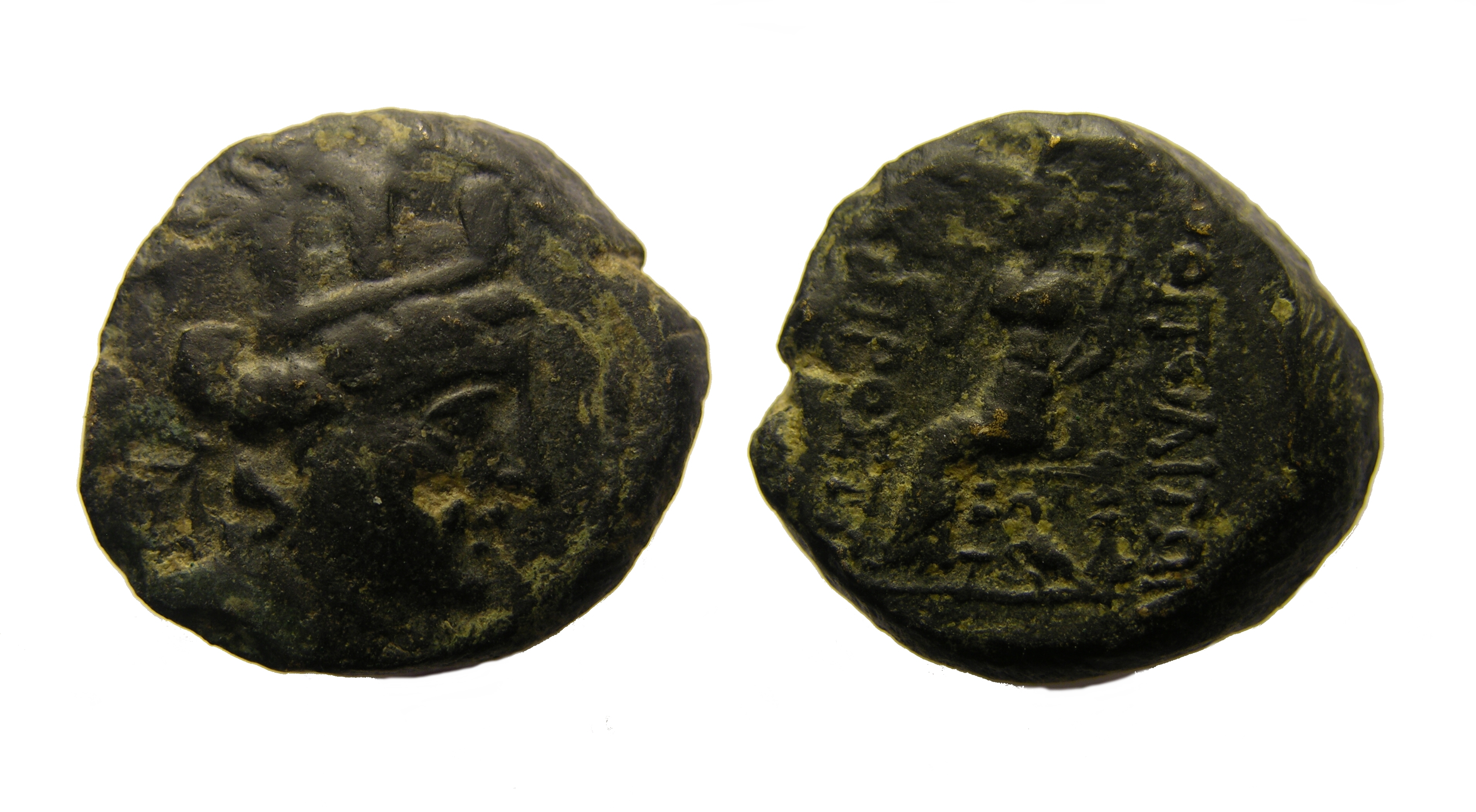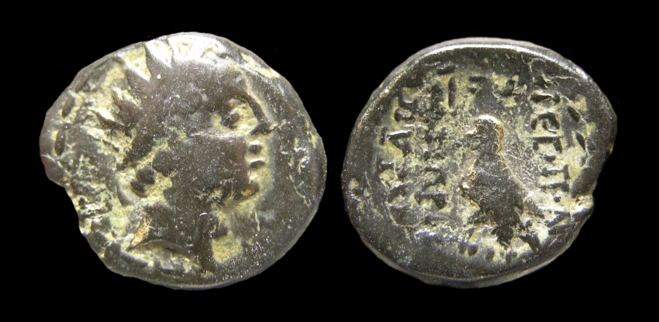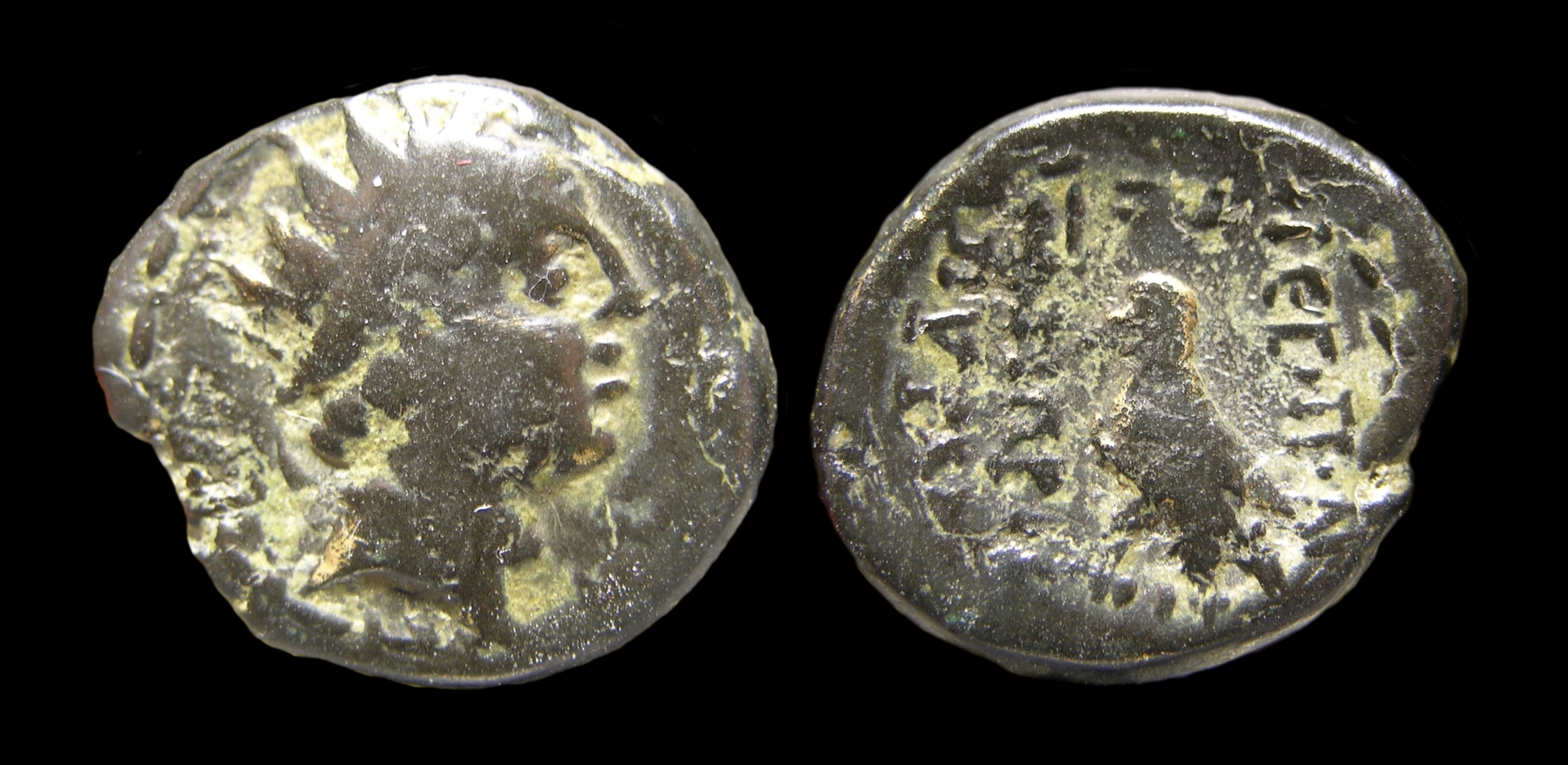 Hover to enlarge
Hover to enlarge

Cilicia, Hieropolis/Kastabala
2nd to 1st c. BC
AE 20
Obvs: No inscription, turreted Tyche right. Branch behind.
Revs: IEPOΠOΛITΩN TΩN ΠPOΣ TΩN, City-goddess with scepter. Eagle beneath.
20mm, 10.9g
$189.00
Order # G 098
Ref: SNG Levante --, Sear --
Note: coin is heavier and thicker than other issues, unpublished.
SOLD_
 Hover to enlarge
Hover to enlarge

